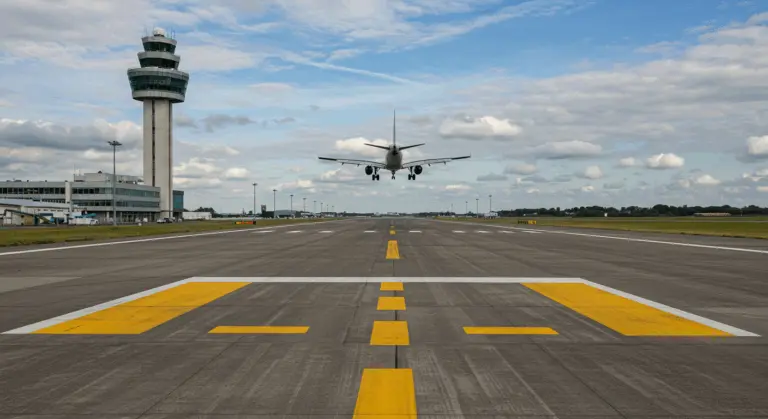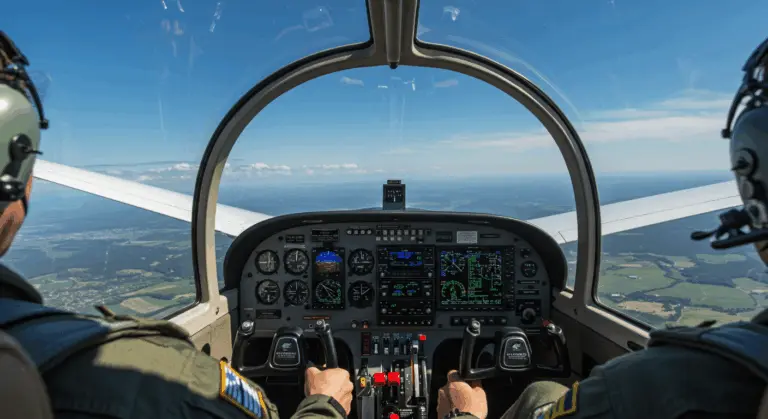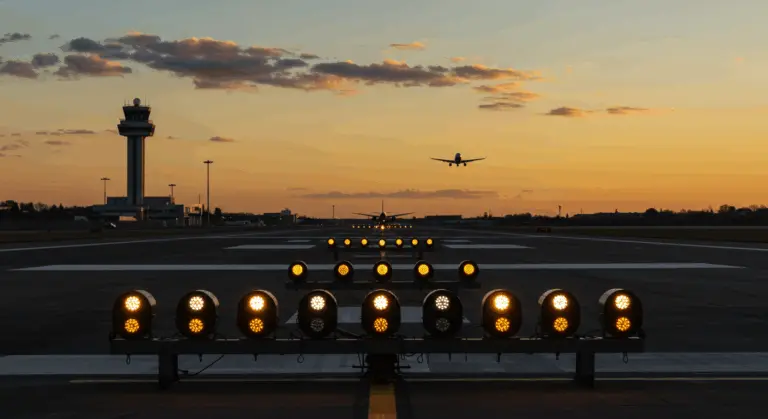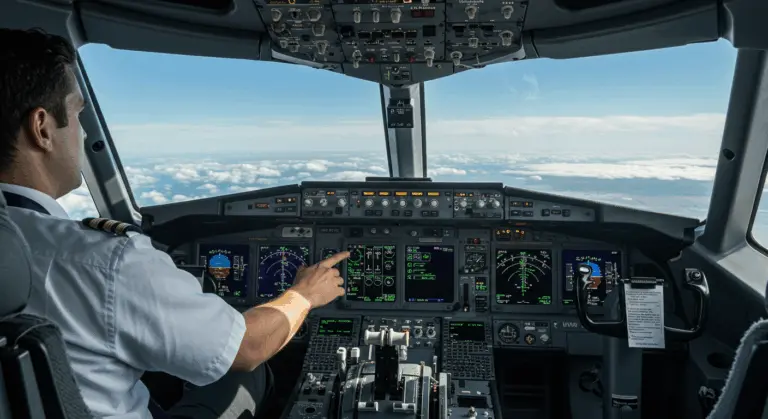MDA vs DA – Understanding the Key Differences in Aviation
What is Decision Altitude (DA)?
Decision Altitude (DA) represents a critical decision point—a specified altitude on precision approaches where pilots must make an immediate choice: continue the landing or execute a missed approach if visual reference to the runway is not established.
DA is used on approaches with electronic vertical guidance that provide a defined glide path, including:
-
Instrument Landing System (ILS)
-
Localizer Performance with Vertical Guidance (LPV)
-
LNA/VSAV (Lateral/Vertical Navigation)
When reaching DA while tracking the glideslope, pilots must establish the required visual references to the runway environment. If these visual references are not established, pilots must execute a missed approach.
Aircraft momentum means: the aircraft may momentarily dip below DA during missed approach initiation—a crucial distinction from MDA’s rigid altitude floor.
What is Minimum Descent Altitude (MDA)?
Minimum Descent Altitude (MDA) establishes the lowest permissible altitude—expressed in feet above mean sea level (MSL)—for descent on non-precision approaches when visual reference to the runway hasn’t been established.
MDA is used for non-precision approaches that lack electronic vertical guidance, such as VOR or LNA approaches.
The approach technique is different: pilots descend to MDA, level off decisively, then maintain that altitude until either reaching the Missed Approach Point (MAP) or acquiring visual contact with the runway.
If the runway is not visible at the MAP, pilots must execute the missed approach immediately. This “dive and drive” methodology—descending then flying level to a specific point—fundamentally distinguishes MDA operations from DA procedures.
Key Differences Between MDA and DA
| Feature | Decision Altitude (DA) | Minimum Descent Altitude (MDA) |
| :— | :— | :— |
| Approach Type | Precision (e.g., ILS, LPs) | Non-Precision (e.g., VOR, LNA) |
| Pilot Action | Continuous descent to a decision point. | Descend, then level off (“dive and drive”). |
| Altitude Nature | A specific point in space to make a decision. | An absolute altitude floor not to be breached. |
| Decision Point | At the DA itself; an immediate go/no-go decision. | At the Missed Approach Point (MAP) if runway is not in sight. |
| Inertia | A momentary dip below DA is accounted for. | No descent below MDA is permitted without visual contact. |
Decision Height (DH) and Its Relation to MDA and DA
Decision Height (DH) frequently creates confusion with Decision Altitude (DA), but they represent an important technical difference.
Decision Altitude (DA) is an altitude measured in feet above mean sea level (MSL).
Decision Height (DH) is a height measured relative to the runway’s threshold elevation (ADZE).
-
DH is used for Category II and III precision approaches, which often rely on a radio altimeter for accuracy.
-
This distinction is crucial at high-elevation airports where MSL altitude differs significantly from height above the runway.
-
Approaches with DH minimums may require a radio altimeter, while a barometric altimeter is sufficient for DA.
Conclusion: MDA vs DA in Aviation
MDA establishes an uncompromising altitude floor for non-precision approaches, while DA serves as a decision point along a guided vertical path for precision approaches. Understanding this operational difference is essential to instrument flight safety and professional airman ship.







